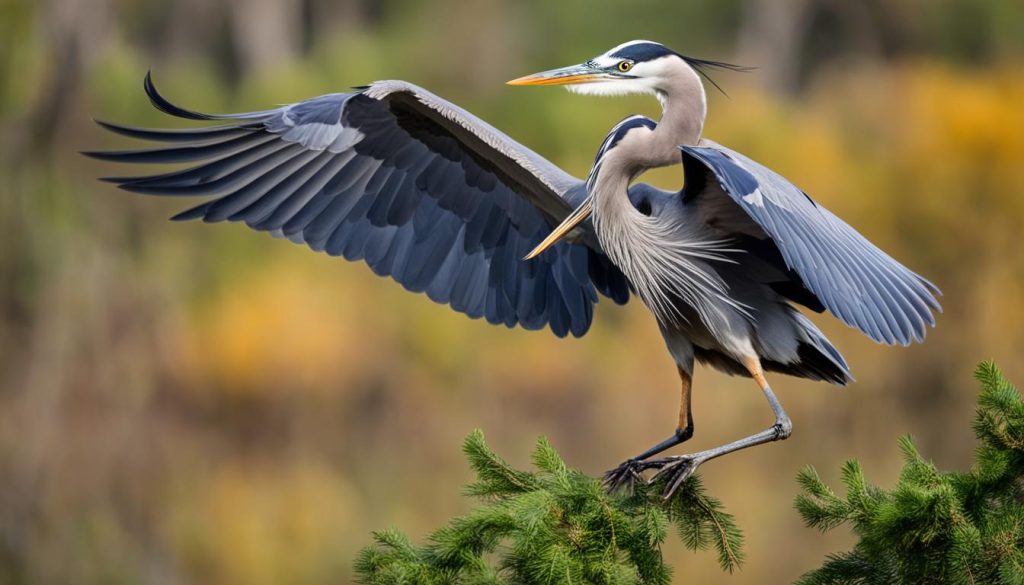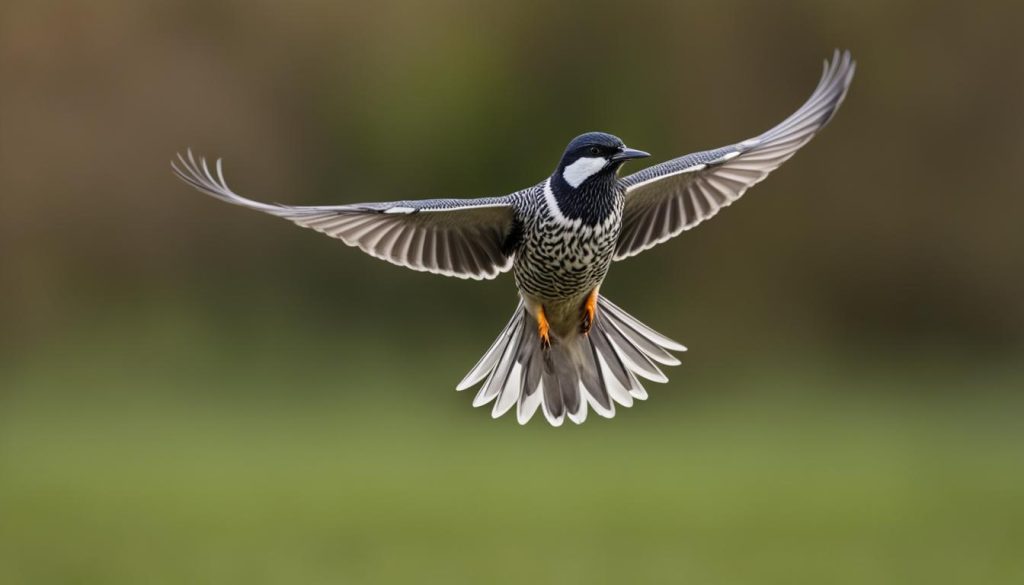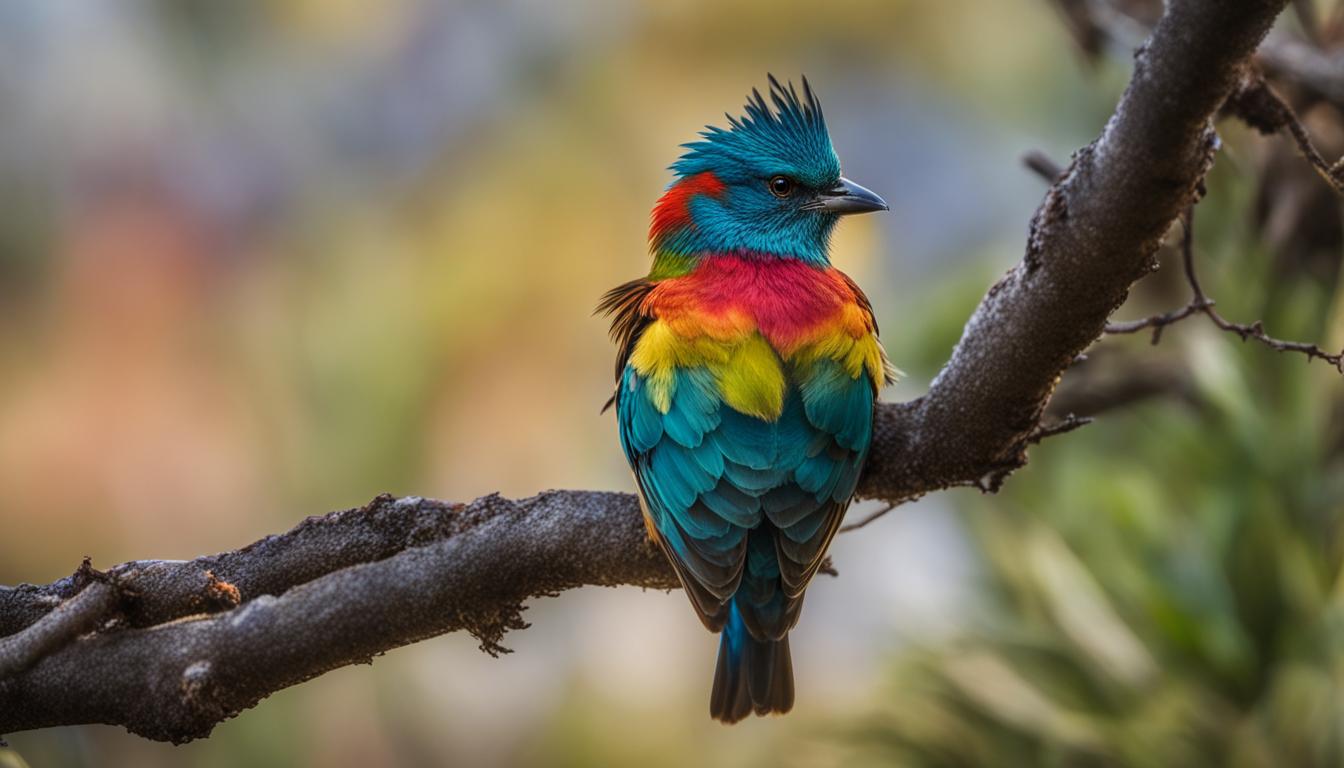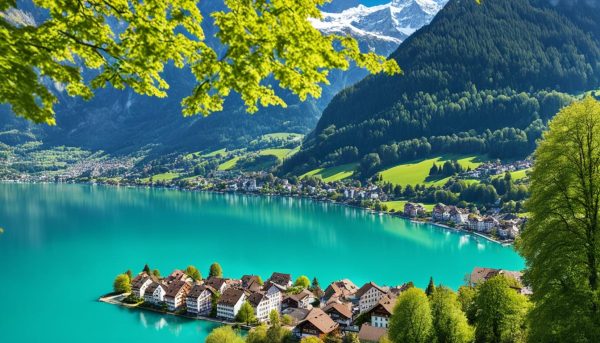Bird photography is a fascinating and rewarding genre that requires specialized techniques and a deep understanding of avian behavior. Capturing stunning images of birds in their natural habitats can be challenging, but with the right tips and techniques, you can elevate your bird photography skills to new heights.
Key Takeaways:
- Understanding the behavior and habitat of birds is essential for successful bird photography.
- Patience and composition play a crucial role in capturing impactful bird photographs.
- Adapting camera settings and shutter speed to the specific conditions is crucial for obtaining sharp and well-exposed images.
- Don’t overlook common bird species, as they can make for captivating photographs.
- Practice and dedication are key to improving your bird photography skills.
Understanding Your Subject
Understanding the temperament and behavior of birds is essential for successful bird photography. By gaining insight into their habits and characteristics, photographers can anticipate their movements and capture stunning images. Here are some key factors to consider when delving into the world of bird behavior:
Cooperation and Proximity
Some birds are more cooperative and allow for closer proximity, while others can be easily spooked. It’s important to approach each bird with respect and caution, keeping a safe distance that allows you to observe their natural behavior without causing disturbance.
“Patience is key; observe the birds from a distance and gradually work your way closer, allowing them to acclimate to your presence.”
Migratory Patterns
Certain birds embark on seasonal migrations, flying long distances to find favorable conditions. Researching the migratory patterns of the species you wish to capture can help you plan your bird photography trips accordingly. By knowing when and where these birds are likely to be present, you can maximize your chances of encountering them.
Timing and Activity
Some birds are only active during specific times of the day. Early mornings and late afternoons are often the best times for bird photography, as birds tend to be more active and the lighting conditions are favorable. Planning your shoots during these periods can greatly enhance your opportunities for capturing stunning images.
Behavioral Cues
Bird behavior can provide valuable cues for capturing captivating images. Pay attention to their feeding habits, mating rituals, and interactions with other birds. These moments offer glimpses into their natural behaviors and can result in compelling photographs.
By understanding bird behavior and applying this knowledge during your bird photography trips, you can increase your chances of capturing remarkable images that truly showcase the beauty and uniqueness of these magnificent creatures.
Patience and Composition
Patience is a virtue when it comes to bird photography. Instead of hurriedly snapping away, take the time to observe the scene and carefully compose your shot. Consider the elements of composition such as lighting, background, and storytelling to create visually stunning images that capture the essence of your subject.
One of the key factors in bird photography is patience. By waiting for the right moment, you can capture images that tell a story and evoke emotions. Take the time to understand the bird’s behavior and movements before pressing the shutter button. By anticipating the bird’s next action, you can capture unique and captivating shots.
Composition plays a vital role in enhancing the visual appeal of your bird photographs. Pay attention to the placement of the bird within the frame, the balance of elements, and the overall harmony of the image. Experiment with different angles, perspectives, and focal lengths to create compelling compositions that draw the viewer’s eye.
“Photography is an art of observation. It’s about finding something interesting in an ordinary place… I’ve found it has little to do with the things you see and everything to do with the way you see them.” – Elliott Erwitt
Framing the Shot
When framing your shot, consider the Rule of Thirds, a popular composition technique. Imagine the frame divided into a grid of nine equal parts by two horizontal and two vertical lines. Positioning your subject along these lines or at the intersection points can create a visually pleasing and balanced composition. Experiment with different compositions to see what works best for the bird and the surroundings.
Lighting is another essential aspect of composition in bird photography. Soft, diffused light often produces the best results, as it brings out the colors and details of the bird’s plumage. Golden hour, the time shortly after sunrise or before sunset, provides warm and soft lighting that adds a magical touch to your images. Additionally, pay attention to the direction of light and the resulting shadows, as they can add depth and dimension to your photographs.
Background selection is crucial to ensure that your bird subject stands out. Look for clean and uncluttered backgrounds that don’t distract from the bird. Avoid busy or distracting elements that can take away from the main focus. Experiment with different angles and distances to achieve a pleasing separation between the bird and the background.
Achieving Depth and Emotion
Creating depth in your bird photographs adds a three-dimensional feel, making the image more engaging. Use foreground elements such as branches or leaves to add layers and create depth within the frame. This technique not only adds visual interest but also gives a sense of the bird’s environment, enhancing the storytelling aspect of the photograph.
Lastly, strive to capture the emotion and personality of the bird. Pay attention to the bird’s posture, expression, and behavior. A thoughtful gaze, a graceful pose, or an action-filled moment can all contribute to a powerful and emotive image. Look out for these moments and be ready to seize them with patience and a well-composed shot.
| Benefits of Patience and Composition in Bird Photography |
|---|
| 1. Enhanced storytelling and visual impact |
| 2. Capturing unique and captivating moments |
| 3. Creating visually pleasing and balanced compositions |
| 4. Making the bird subject stand out through careful background selection |
| 5. Adding depth and dimension to the image through foreground elements |
| 6. Conveying the bird’s emotions and personality in the photograph |
Camera Settings and Shutter Speed
When it comes to bird photography, understanding and using the right camera settings is essential for capturing stunning images. Different bird photography situations call for specific adjustments to ensure optimal results. Let’s explore the key camera settings and how to use them effectively.
Focus Settings
One of the most important camera settings in bird photography is focus. To capture sharp and well-defined images of birds, it’s crucial to set your camera’s focus mode appropriately. For static or perched birds, using a single-point autofocus (AF) or manual focus can yield excellent results. On the other hand, continuous AF mode is ideal for capturing birds in flight or birds engaged in fast-moving actions.
Exposure Compensation
Mastering exposure is vital to ensure proper lighting and balanced tones in your bird photographs. Exposure compensation allows you to adjust the exposure level to compensate for challenging lighting conditions. For example, when photographing birds against bright skies, you may need to increase the exposure to avoid underexposure and preserve the details of the birds’ plumage. Conversely, when shooting birds in dark or shadowy areas, reducing the exposure can prevent overexposure and recover highlight details.
Shutter Speed
Shutter speed plays a significant role in capturing birds in different situations. For perched birds, using a relatively slower shutter speed can help emphasize their stillness and portray a sense of tranquility. In contrast, photographing birds in flight requires a faster shutter speed to freeze their motion and maintain sharpness. Experimenting with different shutter speeds can enhance your bird photography by allowing you to convey a sense of action or capture the intricate details of a bird’s feathers.
“The right camera settings, including focus, exposure compensation, and shutter speed, play a vital role in achieving great results in bird photography.” – Jane Peterson
By adjusting your camera settings based on the specific conditions and bird photography scenarios, you can elevate the quality of your images and capture the beauty of avian subjects in their natural habitats.
Now, let’s take a closer look at the examples below to understand how different shutter speeds affect the outcome of bird photography:
| Shutter Speed | Effect |
|---|---|
| 1/500s or faster | Freeze the movement of birds in flight, capturing sharp details. |
| 1/250s to 1/500s | Convey a sense of motion while maintaining clarity. |
| 1/60s to 1/250s | Show slight motion blur, adding a dynamic feel to the image. |
| Slower than 1/60s | Introduce intentional blur, enhancing the artistic value of the photograph. |
Remember, finding the ideal shutter speed depends on various factors such as the bird’s activity, lighting conditions, and desired artistic expression. Keep experimenting and exploring different settings to achieve unique and captivating bird photographs.

Making the Most of Common Subjects
While rare and exotic birds are often the focus of many bird photographers, it would be a mistake to overlook the beauty and potential of common subjects. Everyday birds can offer striking photographic opportunities if you pay attention to crucial factors such as lighting, behavior, and composition. By honing your skills on these more accessible subjects, you can elevate your bird photography to new heights and capture stunning images of all bird species.
Common subjects may include familiar backyard birds like cardinals, sparrows, or chickadees. These birds are readily available in most environments and provide ample opportunities for practice. By observing their behavior and habitats, you can develop a deeper understanding of their movements and anticipate captivating moments.
One key aspect to consider when photographing common subjects is lighting. The right lighting can transform an ordinary bird into a majestic specimen. Pay attention to the direction, intensity, and quality of the light. Early morning or late afternoon sunlight, often referred to as the golden hour, can cast a warm and inviting glow on your subject, creating a magical atmosphere. Experiment with backlighting, sidelighting, and frontlighting to add depth and dimension to your images.
Another critical element in bird photography is composition. The way you frame and compose your shot can greatly impact the overall impact and meaning of the photograph. The rule of thirds is a popular guideline to create visually balanced and engaging compositions. Consider placing your subject off-center, aligning it with one of the intersecting points of the grid. This technique adds interest and allows for a more dynamic arrangement.
In addition to the rule of thirds, explore other compositional techniques such as leading lines, symmetry, and negative space. Leading lines can draw the viewer’s eye towards the bird, while symmetry can create a sense of harmony and balance. Conversely, negative space, the empty area surrounding the bird, can evoke a feeling of solitude or emphasize the subject’s presence.
Remember, common subjects offer a wealth of photographic opportunities. By approaching them with creativity and attention to detail, you can capture breathtaking images that rival those of rare and exotic birds. So, next time you head out with your camera, don’t overlook the beauty that lies right in front of you.
Common Subjects for Bird Photography
| Common Species | Features |
|---|---|
| American Robin | Distinctive orange breast, often seen foraging on lawns or perching on trees |
| Black-capped Chickadee | Small and energetic bird with a black cap and white cheeks |
| House Sparrow | Familiar bird found near human habitats, often seen in urban areas |
| Eastern Bluebird | Vibrant blue plumage, frequently observed perched on fence posts or low branches |

By capturing the beauty of everyday birds, you not only have the opportunity to improve your technique and composition skills but also gain a deeper appreciation for the diverse avian world that surrounds us. So, grab your camera, head outdoors, and let the common subjects inspire you to create stunning bird photographs!
Conclusion
Bird photography is a challenging but immensely rewarding pursuit. Whether you are a beginner or a seasoned photographer, there are a few key techniques and tips that can help you elevate your bird photography skills and capture stunning avian images.
Understanding your subject is crucial. Take the time to research and learn about the behavior and habitat of the birds you are photographing. This knowledge will allow you to anticipate their movements, increase your chances of getting closer to them, and ultimately capture more captivating images.
Patience is another vital aspect of bird photography. Don’t rush the process. Take your time to compose your shots, consider the lighting and background, and wait for the perfect moment to capture the essence of your subject. Great photography often requires waiting for that split-second when everything aligns perfectly.
Mastering your camera settings is essential. Experiment with different focus settings, exposure compensation, and shutter speeds to find the best settings for each bird photography situation. The right camera settings will ensure that your images are sharp and well-exposed, bringing out the beauty of the birds.
Finally, don’t underestimate the potential of common subjects. While exotic and rare birds may be captivating, everyday birds can also make for striking photographs. By approaching common subjects with creativity, paying attention to composition and lighting, you can capture stunning images that highlight their unique characteristics.
Remember, bird photography is a journey of continuous learning and improvement. Research and plan your bird photography trips, adapt your camera settings to the specific conditions, and keep practicing to refine your technique. With dedication and passion, you can capture breathtaking images and immerse yourself in the awe-inspiring world of avian photography.
FAQ
What is bird photography?
Bird photography is the art of capturing images of birds in their natural habitats. It requires understanding bird behavior and habitat to get high-quality images.
Why is understanding bird behavior important for bird photography?
Understanding bird behavior helps photographers anticipate their subjects’ movements, allowing for better compositions and more successful photographs.
How can I plan my bird photography trips?
Researching and planning ahead of time can help maximize your opportunities for capturing stunning bird images. Learn about the birds’ preferred habitats, migration patterns, and active times of the day.
What role does patience play in bird photography?
Patience is crucial in bird photography. Instead of rushing to take shots, take the time to observe and understand the scene. Waiting for the right moment can result in more impactful and visually appealing photographs.
What factors should I consider when composing my bird photographs?
Factors such as lighting, background, and storytelling elements should be considered when composing bird photographs. This attention to detail can greatly enhance the overall impact of the image.
How can I adjust my camera settings for bird photography?
Each bird photography situation may require different camera settings. Common adjustments include focus settings, exposure compensation, and shutter speed. Adapting your settings to the specific conditions will help ensure sharp and well-exposed images.
What is the importance of shutter speed in bird photography?
Shutter speed plays a crucial role in capturing birds in different situations, such as perched birds or birds in flight. Using the appropriate shutter speed is essential for capturing sharp and well-exposed images.
Should I only focus on rare and exotic birds for bird photography?
While rare and exotic birds may be sought after, common subjects should not be ignored. Everyday birds can make for striking photographs when attention is given to factors such as lighting, behavior, and composition.
How can practicing on common subjects improve bird photography skills?
Practicing on common subjects allows photographers to sharpen their skills and improve their ability to capture high-quality images of all bird species. It helps in honing techniques and creativity.
What are some concluding tips for bird photography?
Remember to research and plan your bird photography trips, adapt your camera settings to the specific conditions, and keep practicing to improve your technique. With dedication and passion, you can capture stunning avian images.






